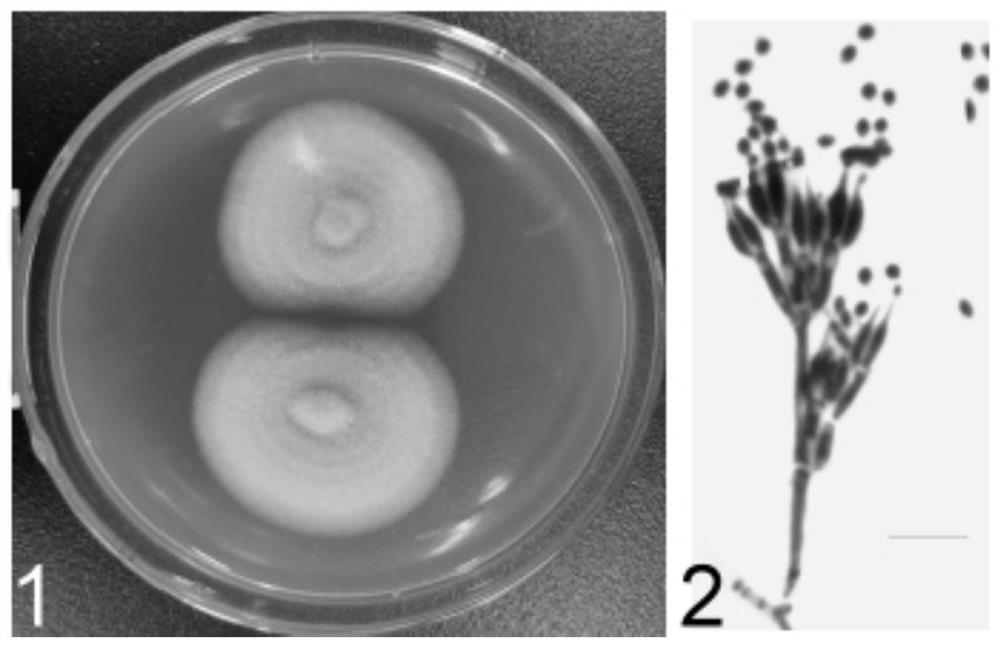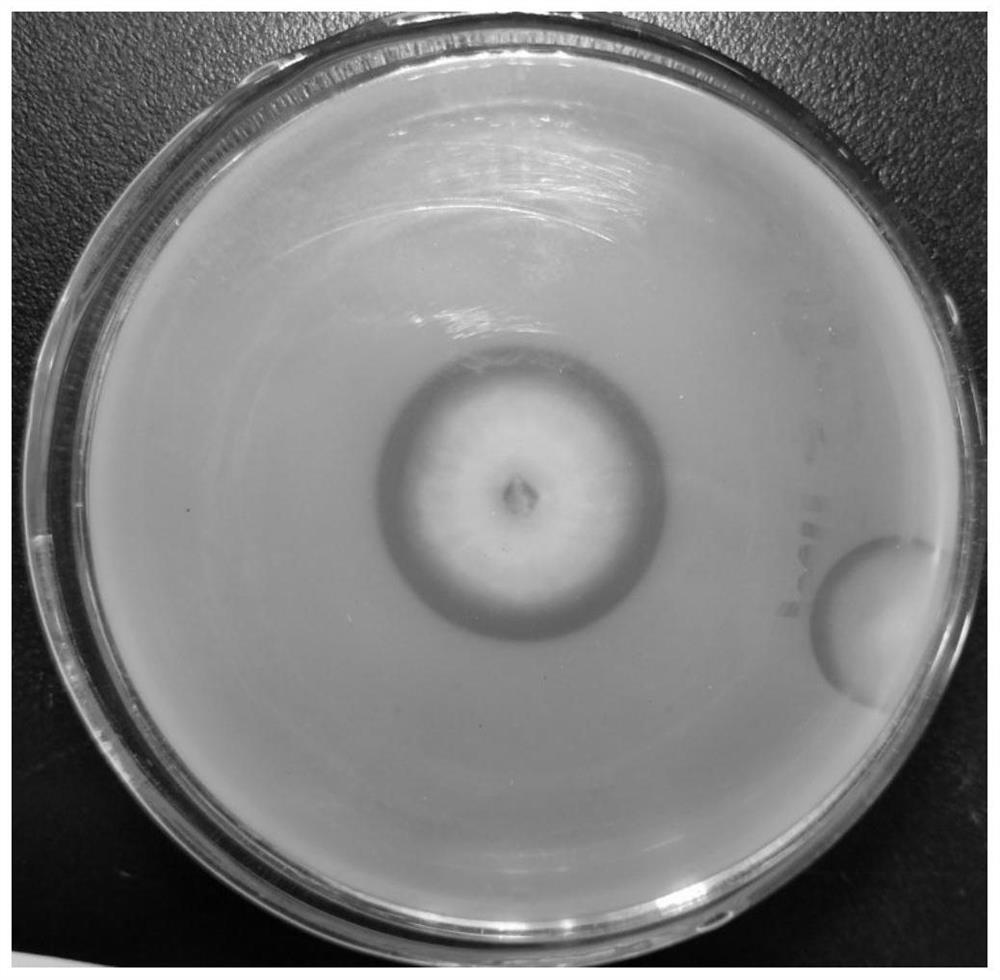Purpureocillium lilacinum and application thereof in chicken feather degradation
A technology of P. lilacinus and chicken feathers, which is applied in the field of biodegradation and can solve the problems of degrading chicken feathers that have not been reported yet.
- Summary
- Abstract
- Description
- Claims
- Application Information
AI Technical Summary
Problems solved by technology
Method used
Image
Examples
Embodiment 1
[0018] Example 1 Sample Collection and Isolation Description of the Bacterial Strains
[0019] 1. Experimental materials and methods
[0020] 1.1 Collection of soil samples: collected from the flower bed soil in Kunming City, Yunnan Province, the collection depth was 3-5cm, and the collected soil samples were put into sterile plastic bags and brought back to the laboratory for later use.
[0021] 1.2 Test medium
[0022] Martin's PDA medium: Weigh 200 grams of peeled and washed potatoes, cut into pieces, boil in water for 30 minutes, filter, collect the filtrate, add 20 g of glucose and 20 g of agar powder, stir well, and then autoclave at 121 °C for 30 minutes. Cool to about 40°C, add 1% sterilized Bengal red aqueous solution 3mL, 1% penicillin solution 3mL and 1% streptomycin solution 3mL.
[0023] 1.3 Enrichment and isolation of strains: Mix the soil sample with 10g of chicken feather powder and place it in a petri dish, keep it moist and incubate at a constant temperatur...
Embodiment 2
[0031] Example 2 bacterial strains produce protease initial screening
[0032] 1. Experimental materials and methods
[0033] 1.1 Medium for experiment
[0034] Skimmed milk powder solid medium (g / L): 5g of skimmed milk powder, 20g of agar powder, and 1000mL of water.
[0035] 1.2 Experimental method
[0036] The GZAC18-2JMP strain was spot-inoculated into the center of the solid medium of skim milk powder, and placed in a constant temperature incubator at 25°C. Measure the diameter of the transparent circle and the colony, and calculate the ratio of the two.
[0037] 2. Experimental results
[0038] Such as image 3 As shown, the diameter of the transparent circle produced by the GZAC18-2JMP strain on the degradation of skim milk powder increases with the growth of the colony. By the 7th day, the size of the transparent circle was 41mm, the diameter of the colony was 35mm, and the ratio between the two was 1.17. The results showed that the GZAC18-2JMP strain can degrade...
Embodiment 3
[0039] Example 3 Effect evaluation of P. lilacinus strain on the degradation of chicken feathers
[0040] 1. Experimental materials and methods
[0041]1.1 Treatment of chicken feathers: Chicken feathers were collected in a farmer’s poultry slaughterhouse in Huaxi District, Guiyang City. The collected chicken feathers were washed and soaked in tap water for 12 hours, rinsed with running water, sterilized by autoclaving at 121°C for 30mins, and dried in an oven at 50°C for later use. .
[0042] 1.2 Preparation of fermentation medium
[0043] Chicken feather 10g, potassium dihydrogen phosphate 0.5g, sodium chloride 1.2g, zinc sulfate 0.05g, calcium chloride 0.2g, dilute to 1000mL, pH 7.0, autoclave at 121°C for 30mins, set aside.
[0044] 1.3 Preparation of spore suspension of P. lilacinus strain
[0045] In the ultra-clean workbench, gently scrape off the hyphae of P. lilacensis GZAC18-2JMP strain cultured on PDA medium at 25°C for 7 days, and transfer it to a sterilized tes...
PUM
| Property | Measurement | Unit |
|---|---|---|
| diameter | aaaaa | aaaaa |
Abstract
Description
Claims
Application Information
 Login to View More
Login to View More - R&D
- Intellectual Property
- Life Sciences
- Materials
- Tech Scout
- Unparalleled Data Quality
- Higher Quality Content
- 60% Fewer Hallucinations
Browse by: Latest US Patents, China's latest patents, Technical Efficacy Thesaurus, Application Domain, Technology Topic, Popular Technical Reports.
© 2025 PatSnap. All rights reserved.Legal|Privacy policy|Modern Slavery Act Transparency Statement|Sitemap|About US| Contact US: help@patsnap.com



